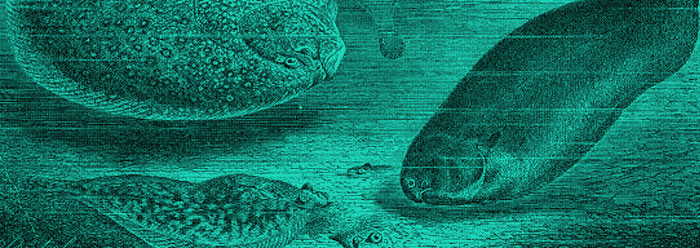Evolutionists are praising research recently conducted on flatfish fossils, and one banner publication went a bold step further in claiming that the find contradicts intelligent design and creation arguments.
National Geographic posted the story1 based on Chicago paleontologist Matt Friedman's research on the "incomplete orbital transit" of two flatfish fossils found in northern Italy.2 One of the fossilized fish, Heteronectes, has one eye in the middle of one side of its skull and the other eye near the top of the other side. Some scientists believe that the finds represent evolutionary transitions from fish with eyes on either side of their heads to flatfish such as the flounder.
NG News writer Anne Minard stated, "Intelligent design advocates often cite the relative scarcity of transitional species in the fossil record as evidence of the intentional creation of species….The new discovery, however, is unlikely to change the minds of many creationists."1
Before the publication of her article, Minard spoke to zoologist and ICR science lecturer Frank Sherwin, who called Friedman's findings "underwhelming."
"We have no problem with the variation within flatfish. What we're asking is, Show me how a fish came from a nonfish ancestor," Sherwin said.
Minard failed to answer Sherwin's challenge, focusing instead on Friedman's arguments: "Fossils from excavations in northern Italy and Paris revealed that the intermediate specimens once lived together with flatfishes having both eyes on one side of the skull, [Friedman] said. It's possible that the more modern forms eventually outcompeted the intermediate versions, he added."1
It is also possible that there were no intermediate versions at all, just extinct variations within the created flatfish kind. It is well-known that these fish show a wide range of adaptation—more than the other vertebrates.3 Larval flatfish undergo a unique transformation whereby one eye (and its socket, etc.) migrates over the top of its skull to the other side, so the adults have both eyes on one side of the skull.
Transitional forms would possess true transitional features such as half scales, half feathers, or half feet/ half wings, not merely eye displacement. The absence of transitions in the fossil record remains strong evidence against evolutionary origins.4
Friedman's research reveals additional reasons why these fossils may not represent transitional forms. In Nature, Freidman refers to "the sudden appearance of anatomically modern pleuronectiform [flatfish] groups in the Palaeogene period."2 Thus, these newly-discovered forms were found in the same rock layers with the fish they allegedly evolved into! If they were transitional, they should be in rock layers above regular fish but below flatfish.
He then concludes, "Stem representatives…have yet to be identified for many acanthomorph clades, but their recognition might prove invaluable in delivering a stable hypothesis of interrelationships for this exceptional vertebrate radiation" (emphasis added).2 Is this not an admission that the evolutionary hypothesis ("vertebrate radiation") is not stable, and that transitional forms ("stem representatives") are so lacking that the discovery of a genuine one would be "invaluable"?
It is unfathomable that a large, reputable media group like National Geographic would claim that this evidence contradicts origin by design. Clearly, this fish is no help for evolution because it is not transitional. Its features could easily have been intentionally designed—provided that we allow a Creator into the realm of possible causes.
References
- Minard, A. Odd Fish Find Contradicts Intelligent-Design Argument. National Geographic News. Posted online July 9, 2008, accessed July 9, 2008.
- Friedman, M. 2008. The evolutionary origin of flatfish asymmetry. Nature. 454: 209-212.
- Colbert, E. et al. 2001. Colbert's Evolution of the Vertebrates. New York: Wiley-Liss, 71.
- Gish, D. 2006. Evolution: The Fossils Still say No! El Cajon, CA: Institute for Creation Research, 333.
* Mr. Thomas is Science Writer.
Article posted on July 15, 2008.





















